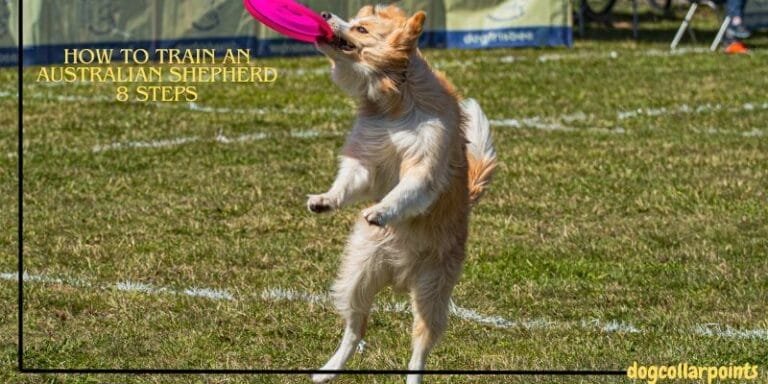How To Train Stubborn Dog – 7 Effective Ways

Are you struggling with a stubborn dog that seems to refuse any type of training? You’re not alone. No matter what you do, many dog owners face the challenge of dealing with a stubborn dog. But don’t lose hope! With the right approach and understanding, it is possible to train stubborn dogs to listen to your commands and behave well as companions.
In this guide, we’ll delve into the root causes of stubbornness in dogs and offer effective techniques to train your furry friend with respect and success. So let’s get started on transforming your dog from a “doorstop” to an obedient companion. So why wait? Let’s dive into the world of training stubborn dogs!
Identifying Stubbornness in Dogs
Before you roll up your sleeves and tackle the issue head-on, it’s first a matter of ensuring that the behavior you’re noticing is indeed stubbornness. Dogs exhibit stubborn behavior when they repeatedly refuse to carry out a behavior they have been trained to do, often in the face of clear motivation or in the absence of any clear distractions that might explain away a single instance of disobedience.
But why do some dogs develop these obdurate tendencies? There’s no one-size-fits-all answer, but common reasons for stubbornness include:
- Fear
- Lack of Clear Communication
- Personality
- Prior Training History
The root cause can shape the approach you take to training. For instance, an underlying fear may require building more trust and a less intense training regimen. Personality may suggest a more creative approach to capture their interest, and a history of inconsistent training methods may just lead to confusion on the dog’s part.
7 Effective ways How to Train Stubborn Dog
- Start with the basics: When training a stubborn dog, it’s important to start with basic commands such as “sit,” “stay,” and “come.” These are essential for obedience and can serve as building blocks for more complex behaviors.
- Use high-value treats: Stubborn dogs may be more motivated to listen if they know there’s a delicious treat waiting for them. Use high-value treats such as small pieces of cheese or meat to reinforce positive behavior.
- Keep training sessions short: Dogs with stubborn habits may have short attention spans, so short, It’s more effective to have frequent training sessions instead of having long, infrequent ones. Keeping your dog engaged will prevent boredom.
- Be consistent with rewards and consequences: Just like humans, dogs respond well to consistency. Therefore, it’s important to reward your dog for good behavior consistently and provide consequences for unwanted behaviors in a similar manner.
- Use positive reinforcement techniques: Positive reinforcement involves rewarding desired behaviors instead of punishing negative ones. This method is more effective with stubborn dogs as it motivates them to continue exhibiting good behavior.
- Be patient and don’t give up: Training a stubborn dog may take longer than expected, but it’s important to remain patient and not give up. With persistence and consistency, your dog will eventually learn the desired behaviors.
- Make training fun: Instead of viewing training as a chore, try making it fun for both you and your dog. Use toys, games, and play to incorporate training into your daily routines. This will help keep your dog engaged and make the training process more enjoyable for both of you.
By following these effective tips and techniques, you can successfully train your stubborn dog and strengthen the bond between you and your furry friend.
The Role of Breed and Personality:
Each dog possesses unique traits influenced by its breed and individual personality. By recognizing these factors, you can tailor your training methods to align with your dog’s natural tendencies, whether they’re a headstrong terrier or a more laid-back retriever.
How to Training a Difficult Dog to SIT
If the sit command is met with selective hearing from your dog, it’s time to re-evaluate your approach. Start by ensuring the environment is free from distractions that can pull your dog’s focus. Gradually, you want to extend this exercise to incorporate low-level distractions so that your dog learns to listen to your ‘sit’ command despite external temptations.
Corrections to enforce SIT for tough, stubborn dogs
For stubborn sitters, positive reinforcement might need a stronger yank to register. This doesn’t mean you escalate straight to a shock collar – but it might mean a louder or sharper ‘NO’ followed by a gentle physical correction. Another tactic is to withhold a reward until your dog sits as a way to emphasize that ignoring the command comes with a loss of potential gain.
Keep sessions short and sweet – maybe three to five minutes at a time. Longer sessions can lead to frustration for both you and your dog, so a little and often will provide more benefit in the long run.
Training a Difficult Dog to COME/HERE
The recall, or the ‘come’ command, is a tricky one for stubborn dogs who often have their own ideas about what constitutes a good enough reason to return. For this reason, mastering the ‘come’ command is a matter of building a strong association with positive experiences and internal rewards.
Make the ‘come’ command the herald of only the very best things in a dog’s life – treats, play, praise, the possibility of going off-leash – and ensure that compliance is always heavily rewarded.
Why is My Dog Stubborn?
It’s important to understand that stubbornness, as frustrating as it may be, is not a personal slight from your dog. It is your dog’s method of communication with you. By attempting to see the world from your dog’s perspective, you may well understand the reasons for their behavior and can plan an effective training strategy that doesn’t involve an unfair or harmful correction.
As you delve further into the mysterious realm of canine communication, you’ll discover a wealth of methods and strategies to encourage your dog’s cooperation.
In the end, training a stubborn dog is a two-way endeavor. It’s about understanding one another and finding common ground – whether that’s a good belly rub, a favorite toy, or just the joy of sharing a mutually understood command – together, the path to obedience opens up through patience, empathy, and intelligent training practices.
Personal Experience:
Throughout my years of working with dogs of various breeds and temperaments, I’ve encountered my fair share of stubbornness. However, by employing the strategies outlined in this guide and remaining patient and persistent, I’ve witnessed remarkable transformations in even the most headstrong of dogs.
Conclusion
In conclusion, dealing with a stubborn dog can be challenging, but it’s not an impossible task. It requires patience, empathy, and understanding to effectively train your furry friend. By identifying the root cause of stubbornness and implementing positive reinforcement techniques, you can build a strong bond with your dog and achieve obedience without resorting to controversial methods such as shock collars, or remote collar.
Remember, training is a two-way street, and by communicating effectively with your dog, you can overcome any obstacles and create a harmonious relationship built on trust and mutual understanding. So don’t give up on your stubborn dog – with the right approach, they can become a well-behaved companion and a source of unconditional love in your life.
Frequently Asked Questions (FAQs)
What causes a dog to be stubborn?
There could be several reasons why a dog may exhibit stubborn behavior. Some common causes include fear, lack of clear communication, personality traits, and prior training history. It’s important to identify the root cause in order to adapt your training approach accordingly.
How do you train a dog that won’t listen?
When dealing with a dog that won’t listen, remaining patient and consistent is essential. Create a positive association by rewarding desired behavior with treats or toys. Addressing any underlying fears or communication barriers can also help get your dog to listen.
How do you train a stubborn dog to come?
To train a stubborn dog to come, focus on building a strong positive association with the ‘come’ command. Use a calm and encouraging tone, offer high-value rewards, and keep training sessions short and frequent. Gradually increase distractions to reinforce the desired behavior.
How do you train a dog that won’t come?
If your dog refuses to come, it’s important not to punish or scold them, as this can create negative associations. Encourage desired behaviors by using positive reinforcement methods such as rewards and praise. Additionally, build trust and understanding with your dog to improve their response to commands. In order to train a stubborn dog to come when called, patience, consistency, and positive reinforcement are essential.






